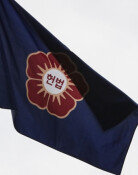Japan’s defense program guideline seeks for military reinforcement
Japan’s defense program guideline seeks for military reinforcement
Posted December. 19, 2018 07:36,
Updated December. 19, 2018 07:36
The Japanese government announced Monday a new national defense program guideline and a mid-term defense program on arms procurement planning. A new set of plans have been launched for the Maritime Self-Defense Forces’ convoys to transform them into aircraft carriers and improve on their offence capabilities even in space and cyberspace. To this end, Japan will invest 27.47 trillion yen, or 274 trillion won, in national defense.
Normally, Japan's national defense program guideline is reviewed every 10 years. Japanese Prime Minister Shinzo Abe, however, set yet another plan just in five years, which implies his willingness to accelerate the militarization of the nation. The prime minister declared that new areas of national defense such as space and cyberspace have never been more important, emphasizing multidimensional combined defense. The cause has blurred the line around the Article of the Japanese Constitution, which permanently forgoes waging of war and military power exercise, and the principle of exclusively defensive posture, which only allows exercise of national defense in the event of being attacked.
Under the new plan, convoys equipped with helicopters are transformed into aircraft carriers on which fighter jets take off and land. Also, the latest Stealth fighter jet F-35B will be introduced while the F-15 will be equipped with long-range missiles. It has been analyzed even in Japan that the Liberal Democratic Party’s argument for enhanced offence capabilities to strike enemy bases could become a reality. Every single step taken by the Abe administration can only cause concern and opposition from neighboring countries. However, Tokyo seems ignorant of the consequences of its actions.
Even with the mitigation of tension on the Korean Peninsula due to negotiations on the North Korean nuclear issue, Japan’s pursuit of militarization only grows unstoppably. It is seen that Japan may believe that it can serve as a forefront nation on Northeast Asia’s geopolitical landscape, if South Korea steps back from the scene. In fact, Japan and the United States are seen to cooperate closer. South Korea-U.S. joint military drills are suspended or reduced in scale, but Japan’s military exercise with Washington is ever increasing. Under these circumstances, there is no time for the South Korean government to merely imply concern with its hands tied in its soured relations with Japan.
Headline News
- Med professors announce intention to leave hospitals starting Thursday
- Bridge honoring Sgt. Moon Jae-sik unveiled in Pennsylvania
- Chief of Staff Chung tells presidential secretaries to stay away from politics
- US FTC bans noncompete agreements
- N. Korea launches cyberattacks on S. Korea's defense companies







